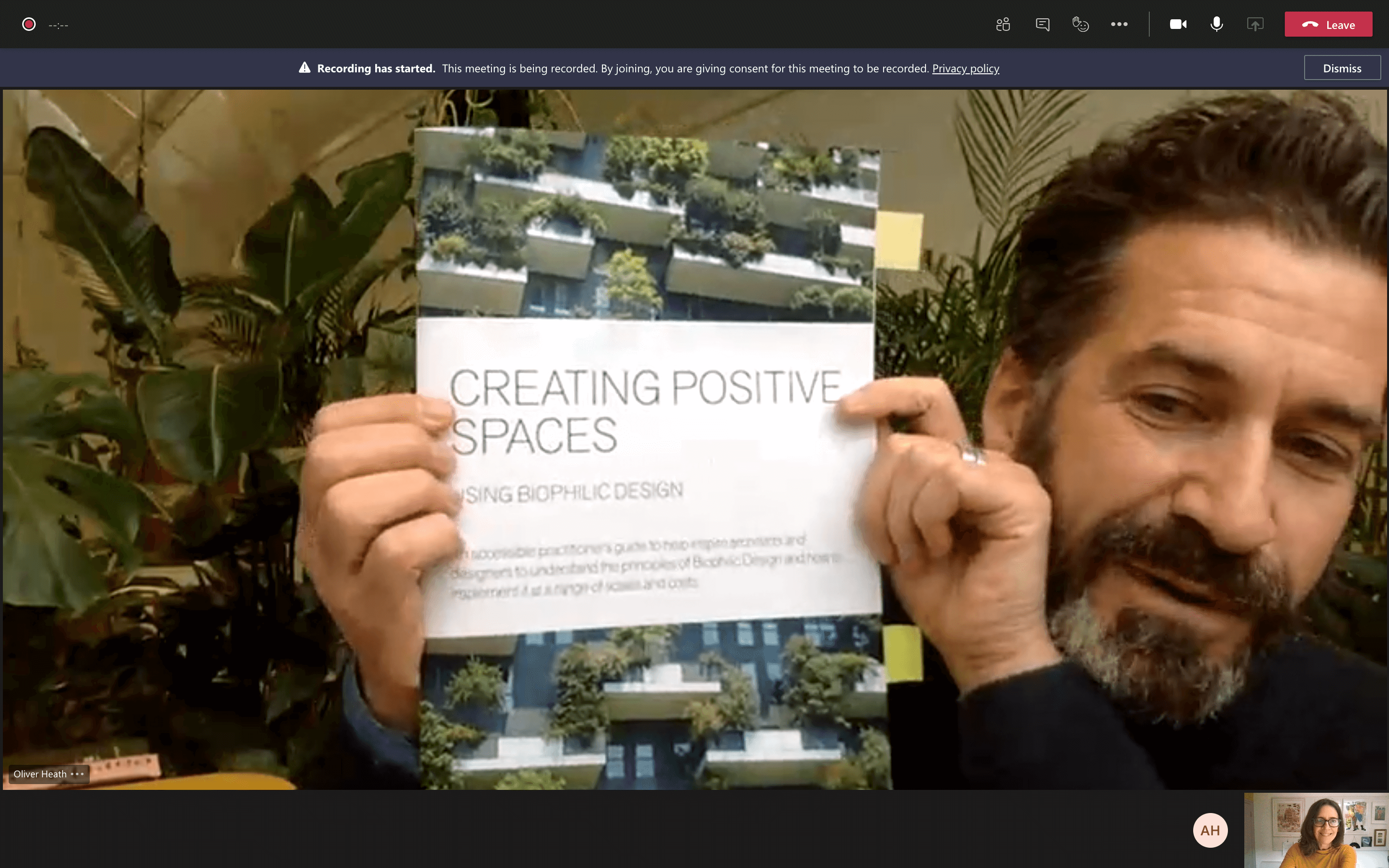Why should businesses care about biophilic design? In my second interview with biophilic design adviser Oliver Heath of Oliver Health Design, we discuss the evidence that biophilic design works and the benefits for businesses when they introduce it into workspaces.
In our last chat you told us what biophilic design is. Now could you explain its benefits?
In our white papers, we've gathered research from psychological studies that shows compelling evidence of the benefits. For example, 10% of employee absence can be attributed to working environments that have no connection to nature. Another study shows that including living elements or views onto nature in an office environment can increase performance by 10-25% in tests of mental recall and functioning. There's also a 15% improvement in wellbeing and a 6% rise in productivity.
But it's not just that. As millennials and Gen Z rise in the workforce, they're going to want to work in places that have a perceived sense of value of them, engages them, delivers on their health and wellbeing and recognises it's important.
If you look at companies at the vanguard of workplace design, like Apple and Amazon, this inclusion of nature and natural elements, the ability to relax and restore, is really important, not just to maintain productivity but also to attract the best staff and to retain them.

Do you have three tips for companies wanting to introduce biophilic design?
Plants, natural light, layout, organisational spaces, thinking about acoustics, subdividing zoning spaces, the introduction of colour, texture, pattern, the opportunity for people to work and focus but also to relax and recuperate. All of these things are fundamental and part of the basic principles of biophilic design.
Here are one or two tips from each of biophilic design's three core concepts.
1. Fundamental to a direct connection to nature, is maximising exposure to natural light. It's good for our circadian rhythm - when we have a good balance of temperatures of light it can help us to sleep better at night, and be more alert and awake in the daytime.
Good levels of natural light allow you to bring in plants and greenery and for them to survive in spaces. Plants' benefits include improving air quality, helping to balance relative humidity, and removing toxins, but also introducing natural colours, texture and movement.
You can do simple things like moving desks to windows, maximising views out and making sure people get the exposure of natural light.
2. For the second, indirect connections to nature, colours inspired by nature are beneficial - like blue, green, yellow, oranges and reds. We all have different social, cultural, geographic connections to different colours. But one thing that unites nearly all of us is positive experiences in nature.
What's important is you don't overwhelm people with colour but you introduce them into your space in the proportions you find in nature.
3. The third is human spatial response. What's missing from many workplaces is the opportunity for recuperation. We think we can go into a workplace, sit at a desk and do eight hours of good work, with maybe a lunch break.
But how many of us actually do four solid hours of work without our cognitive ability draining away. We need to be conscious of people's reduced cognitive ability and the potential for mistakes, for lack of creative thinking. We need to deliver spaces that allow people not just to be energised and focused but also recognise the need for rest and recuperation to get people back at their desks.
You could deliver wellness rooms or places where people can sit and gaze out a window, just drift away for a moment. It's even better if you can do that in natural light, with movement from natural elements.
What about the costs of biophilic design? Is it expensive?
It depends on your budget and how you look at a project. What is more important, that you focus on the short-term building costs over a year or you look at the resulting benefits of that level of design quality over the next 10 years and its ability to improve productivity.
If we're talking short term costs and that's the focus, then no, don't do wellbeing or biophilic design because it will cost you more. If, however, you have staff and you recognise, as the statistics suggest, 90% of typical business operating costs are in staff, then yes, think about the long-term costs and the value that good human-centred design will bring to those occupants.
It's ability to improve productivity, creativity and engagement, to stimulate conversation and innovation, to retain staff and attract the best talent, then yes, it's for you.
• You can download resources about biophilic design for free from the Oliver Heath website. Oliver is part of a new exhibition in September called Planted Cities - the first contemporary design show reconnecting spaces with nature.
